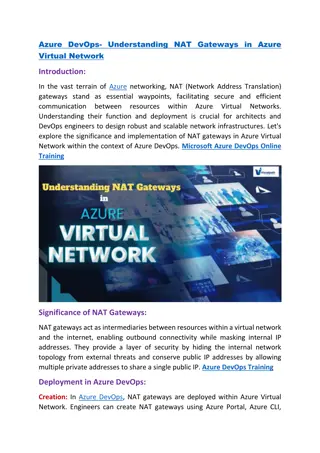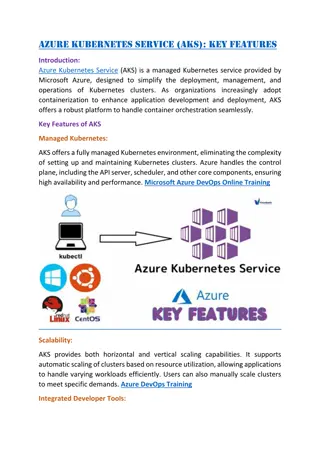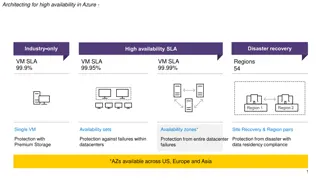
Understanding Azure Scaling and Database Sharding Techniques
Explore methods like scaling out, setting resource limits, and database sharding in Azure for efficient resource management and performance optimization. Learn how to scale your applications effectively with Azure services.
Download Presentation

Please find below an Image/Link to download the presentation.
The content on the website is provided AS IS for your information and personal use only. It may not be sold, licensed, or shared on other websites without obtaining consent from the author. If you encounter any issues during the download, it is possible that the publisher has removed the file from their server.
You are allowed to download the files provided on this website for personal or commercial use, subject to the condition that they are used lawfully. All files are the property of their respective owners.
The content on the website is provided AS IS for your information and personal use only. It may not be sold, licensed, or shared on other websites without obtaining consent from the author.
E N D
Presentation Transcript
Azure Scale Out Peter Cheung Azure User Group
App Services Scale out
SQL Azure Scale up & out
With a single database, you can use either DTU or vCore models to define maximum amount of resources that will be assigned to each database. Elastic pools enable you to define maximum resource limit per group of databases in the pool. Basic Rules
Alternative scale methods Read scale-out is an available feature where you are getting one read-only replica of your data where you can execute demanding read-only queries such as reports. A read-only replica will handle your read-only workload without affecting resource usage on your primary database. Database sharding is a set of techniques that enables you to split your data into several databases and scale them independently.
Database sharding






















